MVP for Software Validation: Launch, iterate, repeat
Bring your idea to life and start iterating and testing with real users in just a few weeks. ondeva helps you discover market demand with limited resources.
Start building your MVP
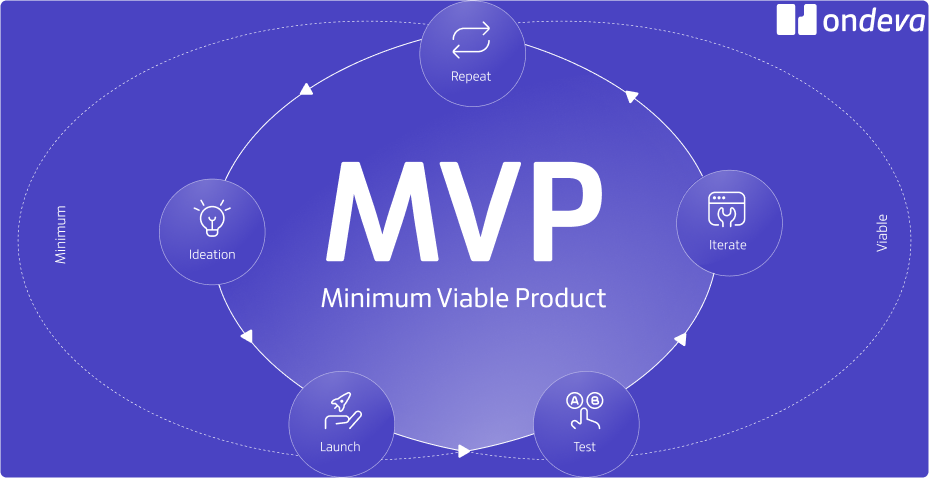
What is an MVP?
MVP is a version of a product that allows to collect maximum user feedback and learnings via experimentation.
MVP includes only essential elements needed to gather customer feedback. Therefore, founders have to decide which features to include and which not.
What is the purpose of an MVP?
Here are the 4 reasons why you might need an MVP:
- Validate the business model
Solve a customer problem through iterations to a point where, eventually, customer demand transforms your product into an established business.
- Identify valuable features for customers
Discover and validate the key features that solve problems for customers.
- Maximize ROI
Avoid investing heavily in features or products that may not resonate with the target market. Keep it simple and focus on the features that matter most.
- Generate virality among users
MVPs are used to attract early adopters and generate virality through word-of-mouth and customer recommendations.
Common challenges in MVP creation
Building an MVP comes with risks:
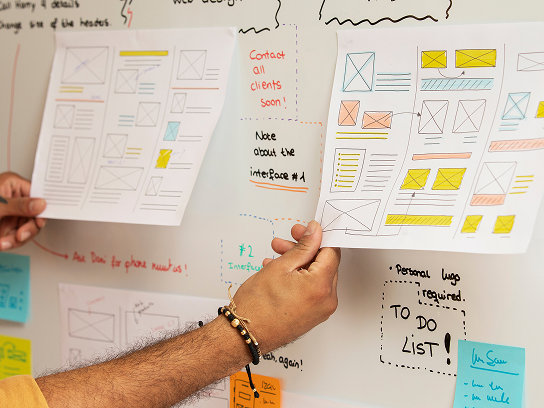
There is a risk of idea and business appropriation
Founders scan the market for new technology to appropriate and MVPs are easy to replicate. Highly functional MVPs are harder to imitate, but are expensive.
- Your ideas can be stolen at the early stages of development
- Hard to apply for patent protection without a stable version of the product

Potential harm to reputation from overhyping the MVP
Founders should introduce a version that generates positive feedback, but they must fulfill those expectations with the full product later.
- Hard to attract interested users without an aspirational MVP
- MVP that overpromises might damage the future company’s reputation
How to define an effective MVP in software development?
Typically, to define an MVP, you go through 4 stages. Here, we list different practices that are used at each stage:
Phase 1. Ideation.
Phase 2. Technical feasibility assessment
Brainstorming of different ways to solve the problem. Here, methods such as Customer Development, Design Thinking, Human-Centered Design, Lean Inception, and others are used.
Assessing the current technology landscape and resources. At this stage, technical people are involved to filter technical scenarios and reduce risks. Various software architectures and project feasibility are considered.
Phase 3. Effort estimation
Phase 4. Evaluation
Evaluating the amount of work, time, and resources required. Methods include lean inception feature sequencer, story points for each task, and feature roadmaps.
The internal validation is with the Product Owner. Validation with the users is performed before the release, when testing on site, through interviews and dashboards with user data after the release.
Phase 1. Ideation.
Brainstorming of different ways to solve the problem. Here, methods such as Customer Development, Design Thinking, Human-Centered Design, Lean Inception, and others are used.
Phase 2. Technical feasibility assessment
Assessing the current technology landscape and resources. At this stage, technical people are involved to filter technical scenarios and reduce risks. Various software architectures and project feasibility are considered.
Phase 3. Effort estimation
Evaluating the amount of work, time, and resources required. Methods include lean inception feature sequencer, story points for each task, and feature roadmaps.
Phase 4. Evaluation
The internal validation is with the Product Owner. Validation with the users is performed before the release, when testing on site, through interviews and dashboards with user data after the release.
Why founders choose ondeva
Build an MVP, test, deploy, and scale more quickly and cost-effectively
Rapid app development
Why code from scratch when you can drag and drop flexible low-code components to get there sooner? You can start configuring, testing, and iterating within hours. Get your ideas live in record time.
Cost efficiency
Innovate faster and test with real users without lengthy processes by focusing on essential features only. Move beyond traditional development, which involves hiring expensive developers and takes months or years.
Integration everywhere
Compatibility lies at the heart of your project. Integrate with any API and publish across different platforms. Keep building with the confidence that you won’t have to start again elsewhere.
Turning ideas into an MVP with ondeva: Client stories
Meet the development teams that accelerate building with ondeva

From the start, the start-up platform was envisioned as a large-scale project built with ondeva. It was a complete success!
"Our giant baby performs and scales"
Claudia Menz, CEO Gründerplattform

An NGO can now compile complex data independently, flexibly, and in a clear manner - without development resources.
“You've finally freed us from Excel!”
Internationally operating NGO

ondeva helped us create web applications and tools for startups and the self-employed in weeks instead of months!
“Delivering digital tools is easy as 123"
Benjamin Wölfing / AC, Everest
Design, build, and scale in 3 simple steps
ondeva handles hard development tasks so you can test your ideas easily


Import your data
Add your tables to ondeva, then handle and structure the data.


Build your logic
Set rules for the way your application behaves on the backend and frontend.


Design your product
Use your own front-end stack or perfect the appearance of your application in ondeva.
We’ll guide you along the way
Kickstart your project by building a strategic partnership with ondeva.

Schedule a call with Frank, our CEO, to learn about our offer.
What differentiates an MVP from a full product?
Minimum Viable Products (MVPs) exist between two key levels: it needs to be good enough to be tested but not fully developed for selling. To be testable, an MVP must be more than just an idea or a "thought experiment." This point is called the testability threshold - the point where an MVP is solid enough to be shown to others for their input.
On the other hand, the exploitation threshold is when the MVP moves from being a test project to a full-blown product ready for the market. This is when the focus shifts to selling the product, making it efficient, and setting up business operations.
So an MVP is a product that falls in the space between testable and ready for the market.
MVP
- Feature Set
Contains only the core features necessary to solve a specific problem and validate the product concept with users. - User Experience
Offers a basic user experience that is functional but might lack the polish and depth of a full product. - Market Strategy
Used as a learning tool to understand the target market and refine the product strategy based on real user data. - Target Audience
Often targeted at early adopters who are more forgiving of imperfections and interested in being part of the product's development.
Full Product
- Feature Set
Includes a comprehensive set of features, developed based on feedback from the MVP stage and further market research. - User Experience
Provides a refined user experience with attention to detail, usability, design, and comprehensive user support. - Market Strategy
Aimed at capturing a significant market share, with strategies for marketing, sales, and customer engagement fully deployed. - Target Audience
Aimed at a broader audience, including late adopters who expect a fully functional and polished product.
Main MVP dimensions
Researchers point at 3 main dimensions of MVP:
Functional
Features that enable the users to experience functional aspects of the product.
Aesthetic
A visual representation of the product including design and user interface.
Symbolic
Features of MVP that carry a symbolic meaning and point at beliefs, values, rituals, and social practices.
Some MVPs integrate all three elements—functional, aesthetic, and symbolic realism—while others may emphasize just symbolic or aesthetic aspects; for example, Oculus Rift attracted first adopters with a symbolic “Star Trek’s Holodeck” image, while the functional product was not fully assembled yet. Meanwhile, some MVPs prioritize demonstrating the product's functionality,
MVP examples
The space between being testable and ready for the market allows for different types of MVPs to emerge, each suited to gathering feedback in its own way before hitting the market.
Napkin MVP
This is the most basic form of MVP, just above the testability level. Southwest Airlines developed the airline concept on a napkin. A simple video explaining the solution or an email campaign without the solution available can also be an MVP. These are types of MVPs that do not allow for direct interactions between users and the MVP.
Dropbox's founder created a simple video to test the demand for file-sharing solutions before building the product.

Landing Page MVP
Users can interact with the landing page, a basic web page with a visual representation of the product.
Buffer used a simple landing page to test if social media managers would be interested in scheduling social media posts. There was no functioning social media software at the start.
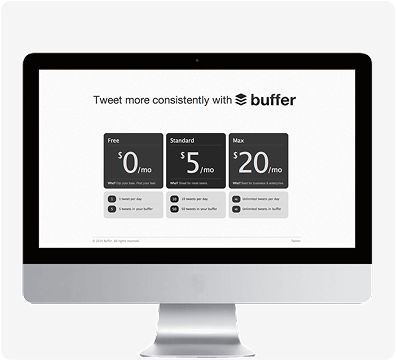
Simulated Customer Experience MVP - Wizard of Oz
These MVPs measure customer behavior. The Wizard of Oz MVP shows the frontend users the potential of what can be achieved, while functions are often performed manually on the backend. Users might think that the technology is in place; however, they are merely presented with a frontend to test the value of the potential product.
Theranos company used this type of MVP. Claiming that they could get a variety of data from a small blood sample, Theranos would exhibit live demos of the Edison machine, while the laboratory tests were done manually, and the Edison machine was not functional.
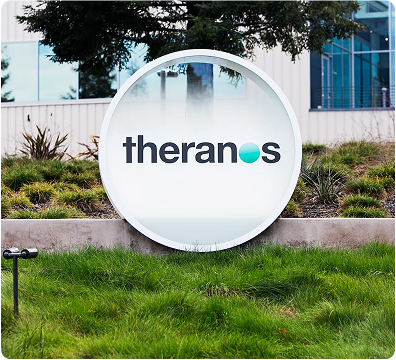
Concierge MVP
This MVP type is similar to the Wizard of Oz type, but the users can see both the front end and what's happening behind the curtains, even though the service is provided manually. Here, transparency and visibility are emphasized.
Airbnb started as a concierge MVP, and the founders made bookings manually.
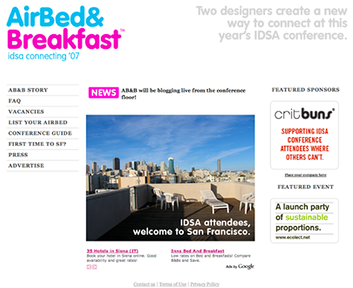
Combined MVP type
Some businesses use different types of MVP, such as a landing page and a concierge MVP. Some show one feature that solves the problem for a customer without revealing the full product’s potential.
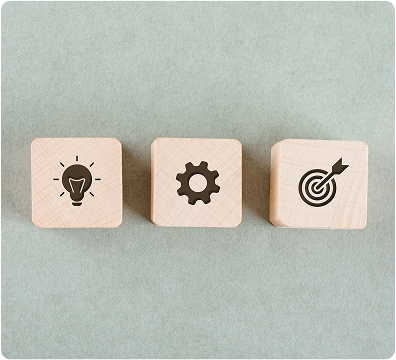
Ready to validate your software idea?
Craft a plan and kickstart your project by building a strategic partnership with ondeva.

Schedule a call with Frank, our CEO, to learn about our offer.
Why build an MVP with ondeva
ondeva simplifies development and deployment, enabling you to prioritize user feedback and iterations
Visual setup
Design pages, construct backend logic, data tables, and APIs visually with no code required. With a visual builder, you can deploy your app faster. Everything from logic flows to automations is developed in a simple visual way.
Gen AI-powered tools
Populate web pages with AI-generated content and images. Build AI apps, offering new ways to interact with your app through LLM and NLP. This dual benefit speeds up development and enhances user experience.
Manage data in the cloud
A powerful data service to help you get started faster. Upload datasets, build tables, and manage data in compliance with GDPR. On the front end, you can provide dynamic data updates to users via graphics, maps, and CSV downloads.
Continuous integration & delivery
Your application is always up-to-date and ready to be deployed without the need to manage multiple development environments.
Choose any front-end stack
You can choose any coding framework or technology to build your app. Enjoy full flexibility and control of user experience, while the development platform handles all the infrastructure tasks.
Collaboration
Add team members and build collaboratively. You can assign roles and define the visibility of the app’s areas. Coordinate tasks in your team based on each member’s development or business experience.
ondeva MVP development platform FAQs
Find answers to the most common questions about ondeva and MVP development.
Airbnb is one of the examples of MVP. The company founders rented out their own apartments and offered a basic website. All the bookings and confirmations were done manually.
MVP, short for Minimum Viable Product, is a basic version of a product designed to gather feedback from customers.
In software development, MVP, or Minimum Viable Product, is a strategy used to rapidly release products to the market and gather customer feedback at an early stage.

